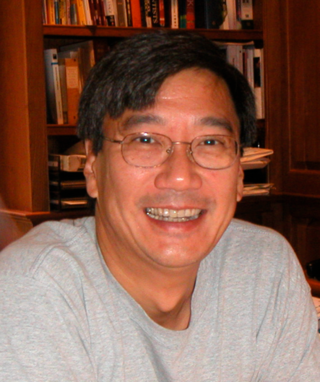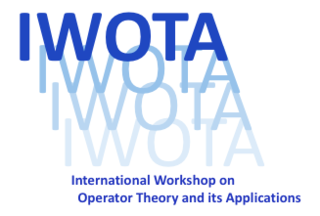Related Research Articles

A world's fair, also known as a fun exhibition or an expo, is a large global exhibition designed to showcase the achievements of nations. These exhibitions vary in character and are held in different parts of the world at a specific site for a period of time, typically between three and six months.

Carlos José Bustamante is a Peruvian-American scientist. He is a member of the National Academy of Sciences.
Hans Albert Einstein was a Swiss-American engineer and educator, the second child and first son of physicists Albert Einstein and Mileva Marić. He was a long-time professor of hydraulic engineering at the University of California, Berkeley.

Bruce Michael Alberts is an American biochemist and the Chancellor’s Leadership Chair in Biochemistry and Biophysics for Science and Education, emeritus at the University of California, San Francisco. He has done important work studying the protein complexes which enable chromosome replication when living cells divide. He is known as an original author of the "canonical, influential, and best-selling scientific textbook" Molecular Biology of the Cell, and as Editor-in-Chief of Science magazine.
Hans Neurath was a biochemist, a leader in protein chemistry, and the founding chairman of the Department of Biochemistry at the University of Washington in Seattle. He was born in Vienna, Austria, and received his doctorate in 1933 from the University of Vienna. He then studied in London and at the University of Minnesota. In 1938, he was appointed professor at Duke University, where he established a research program on the physical chemistry of proteins.

David S. Eisenberg is an American biochemist and biophysicist best known for his contributions to structural biology and computational molecular biology, a professor at the University of California, Los Angeles since the early 1970s and director of the UCLA-DOE Institute for Genomics & Proteomics since the early 1990s, as well as a member of the California NanoSystems Institute (CNSI) at UCLA.

Peter S. Kim is an American scientist. He was president of Merck Research Laboratories (MRL) 2003–2013 and is currently Virginia & D.K. Ludwig Professor of Biochemistry at Stanford University, Institute Scholar at Stanford ChEM-H, and Lead Investigator of the Infectious Disease Initiative at the Chan Zuckerberg Biohub.

Sir Christopher Martin Dobson was a British chemist, who was the John Humphrey Plummer Professor of Chemical and Structural Biology in the Department of Chemistry at the University of Cambridge, and Master of St John's College, Cambridge.

Martin Gruebele is a German-born American physical chemist and biophysicist who is currently James R. Eiszner Professor of Chemistry, Professor of Physics, Professor of Biophysics and Computational Biology at the University of Illinois Urbana-Champaign, where he is the principal investigator of the Gruebele Group.
Charles L. Brooks III is an American theoretical and computational biophysicist. He is the Cyrus Levinthal Distinguished University Professor of Chemistry and Biophysics, the Warner-Lambert/Park-Davis Professor of Chemistry, Professor of Biophysics and Chair of Biophysics at the University of Michigan.
The following is a timeline of the history of the city of San Francisco, California, United States.
James Hurley is a university professor known for his research into proteins. He won the 2014 Neurath Award from the Protein Society for a unique, recent contribution to basic science.

International Workshop on Operator Theory and its Applications (IWOTA) was started in 1981 to bring together mathematicians and engineers working in operator theoretic side of functional analysis and its applications to related fields. These include:

William Allen Eaton is a biophysical chemist who is a NIH Distinguished Investigator, Chief of the Section on Biophysical Chemistry, and Chief of the Laboratory of Chemical Physics at the National Institute of Diabetes and Digestive and Kidney Diseases, one of the 20 Institutes of the United States National Institutes of Health.

Elizabeth Roboz-Einstein was a biochemist and neuroscientist known for purifying and characterizing myelin basic protein (MBP), investigating its potential role in the neurodegenerative disease multiple sclerosis (MS), and helping pioneer the field of neurochemistry.
Finn Wold was a Norwegian-American biochemist known for the elucidation of structure-function relationships of proteins. Wold was a pioneer in the use of reagents to measure and decipher the structures of proteins. He reported one of the first examples of a transition state analogue, and was at the forefront of the design and use of affinity labels.
Robert Thomas Sauer is an American biochemist who is the Salvador E. Luria Professor of Biology at the Massachusetts Institute of Technology.
Rebecca Sue Eisenberg is an American lawyer and professor. She is a Robert and Barbara Luciano Professor at the University of Michigan Law School.
Robert Michael Stroud is a British biophysicist. He was elected to the National Academy of Sciences in 2003.
James Allen Wells is a Professor of Pharmaceutical Chemistry and Cellular & Molecular Pharmacology at the University of California, San Francisco (UCSF) and a member of the National Academy of Sciences. He received his B.A. degrees in biochemistry and psychology from University of California, Berkeley in 1973 and a PhD in biochemistry from Washington State University with Ralph Yount, PhD in 1979. He completed his postdoctoral studies at Stanford University School of Medicine with George Stark in 1982. He is a pioneer in protein engineering, phage display, fragment-based lead discovery, cellular apoptosis, and the cell surface proteome.
References
- ↑ Hermodson, Mark (1 August 2006). "The Protein Society: Celebrating 20 years in 2006—The founding and early years". Protein Science. 15 (8): 1811–1814. doi:10.1002/pro.151811. ISSN 1469-896X. PMC 2242597 . PMID 16877705.
- 1 2 "History". Protein Society. 2014. Retrieved 28 July 2014.
- ↑ "Membership". Protein Society. Retrieved 29 July 2014.